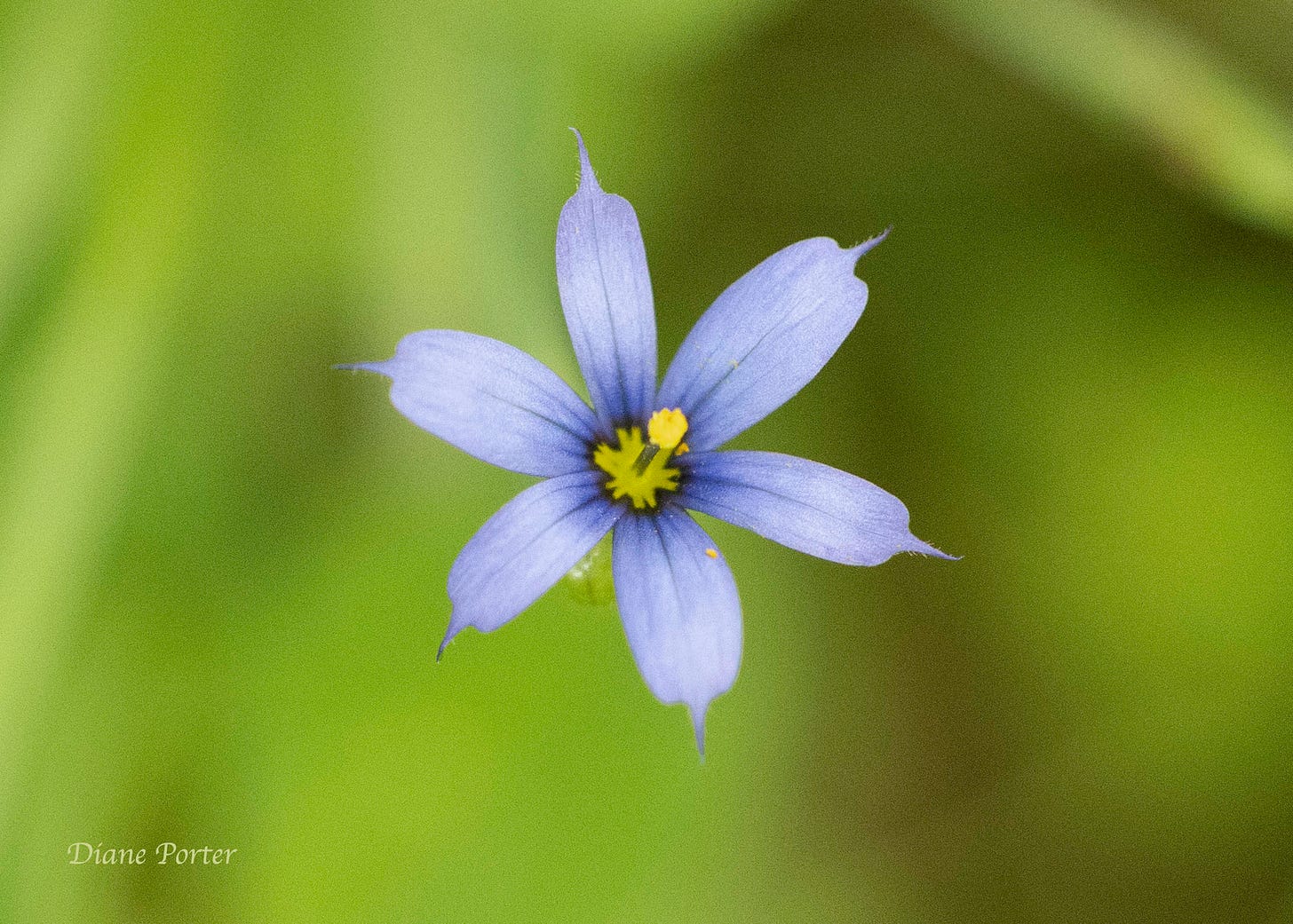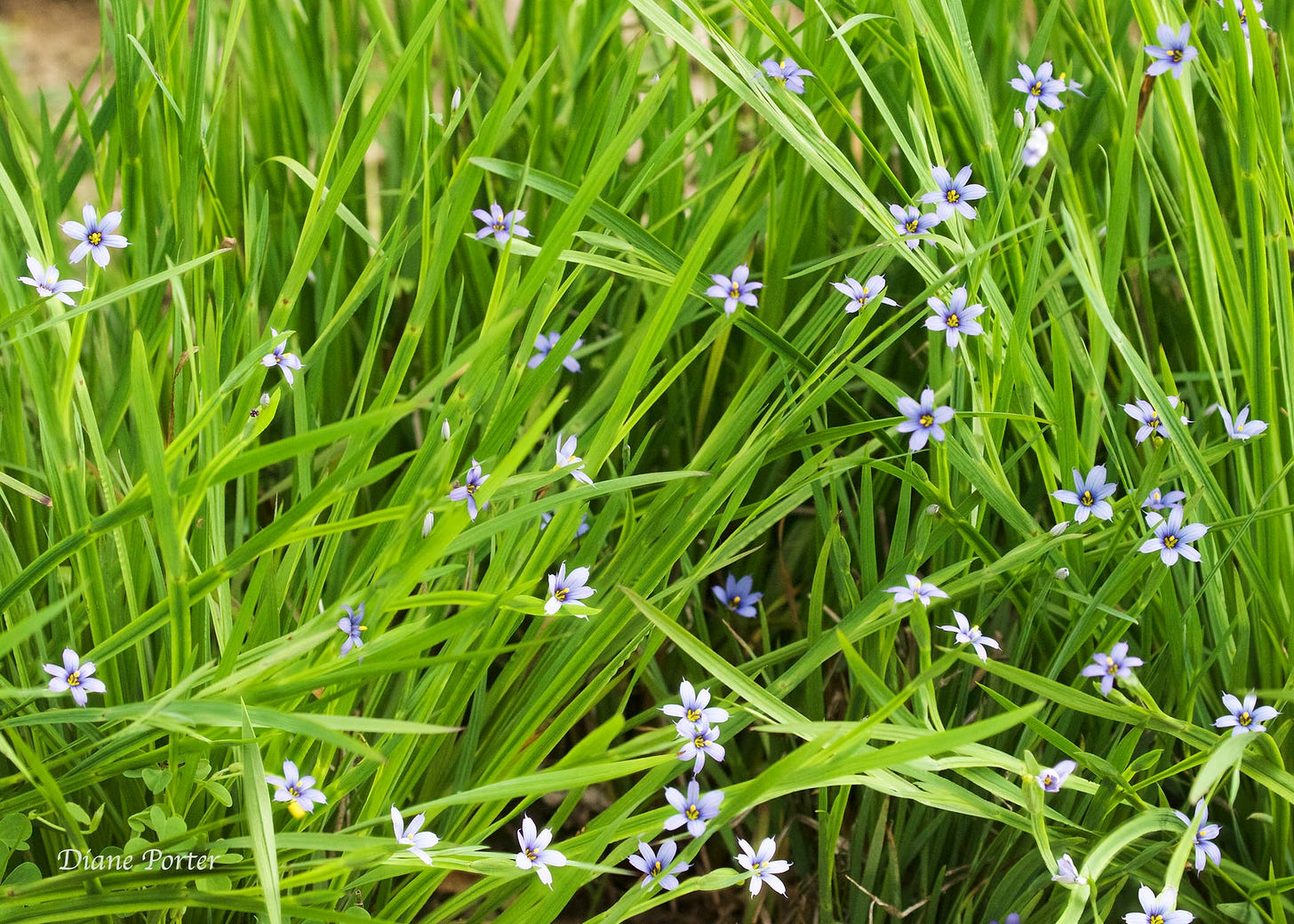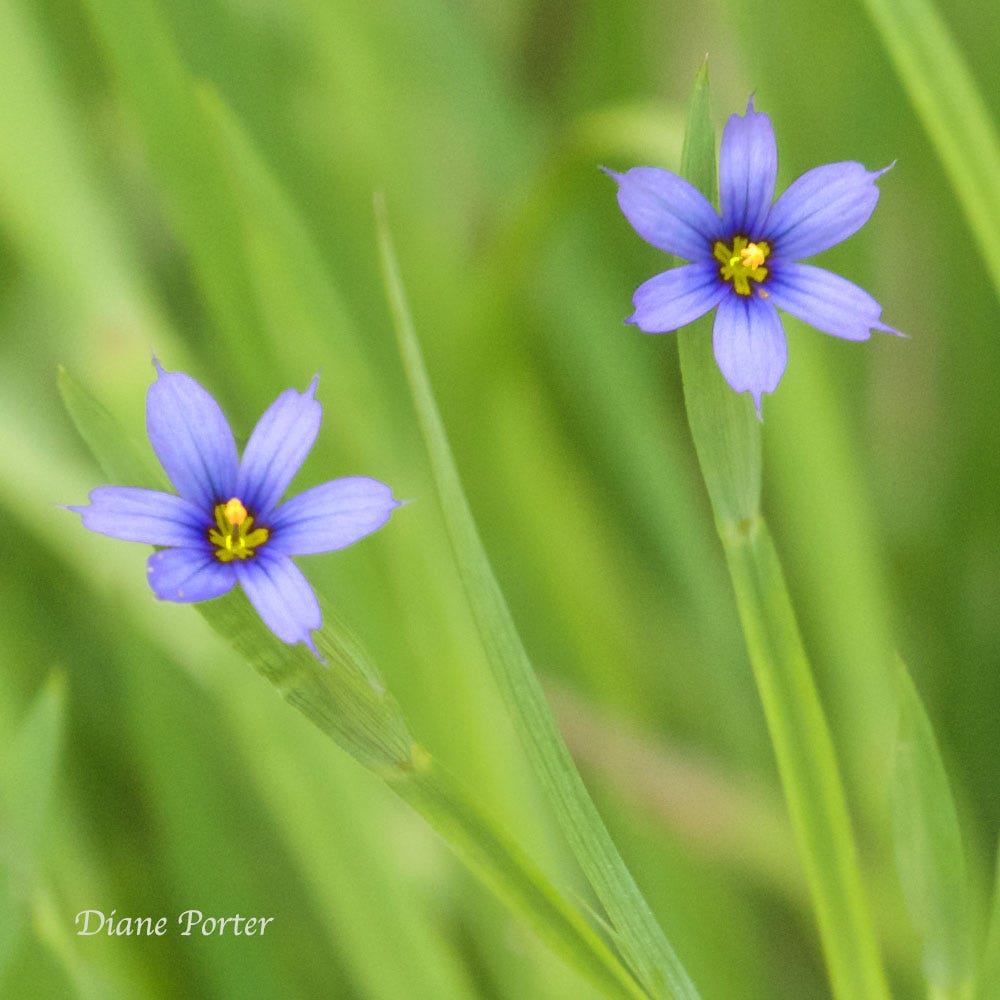

Discover more from My Gaia
So small and hiding. You could walk right past them. But look down into the long grasses, and you’ll see their tiny blue faces looking up at you.
Each blossom is smaller than the tip of your little finger. Blue. It has six petals that end in a wispy point. In its bright yellow center, the pollen resides.
Its name is Blue-eyed Grass, named that way because of its long, thin leaves.
But it’s not actually a grass. The shape of the plant is like a miniature iris, with flattened stems and leaves. In fact, it belongs to the iris family.
When I first found a patch of Blue-eyed Grass growing wild on my land, I marked the spot. After the flowers were finished, I dug up a small clump. It separated easily into several tiny plants.
I planted them by the path to my front door, where I could keep them weeded and watered. They grew slowly, and of course died back when winter came. However, they're a perennial, and so they came up again the next spring.
Soon each plant looked like a tuft of grass. I kept a little space clear around them, because Blue-eyed Grass does not do well in the shade of big, leafy plants.
They bloomed generously. For a couple of weeks in late spring, every time I went out my door I had to stop and admire them.
Where to get Blue-eyed Grass
It would not be ethical (or legal) to dig up plants in parks or other public lands, nor on others’ private property without permission.
Fortunately, some nurseries specialize in native wildflowers. They can tell you which species of Blue-eyed Grass are native to your area. For example, in the Midwest, I often buy seeds and native plants from Prairie Moon Nursery.
Miniature beauty
Tiny flower. Great happiness.


















Was delighted to find it growing in our lawn in SE Virginia years ago. I’ve moved clumps into my beds and enjoy the flowers every spring!
These pop up all over my garden in Virginia. Even in my smallish yard, they are quite variable in intensity of color. Your post had me reading more about them. Evidently they speciate rapidly so some are pretty specialized, at least the eastern ones--hence often considered threatened.